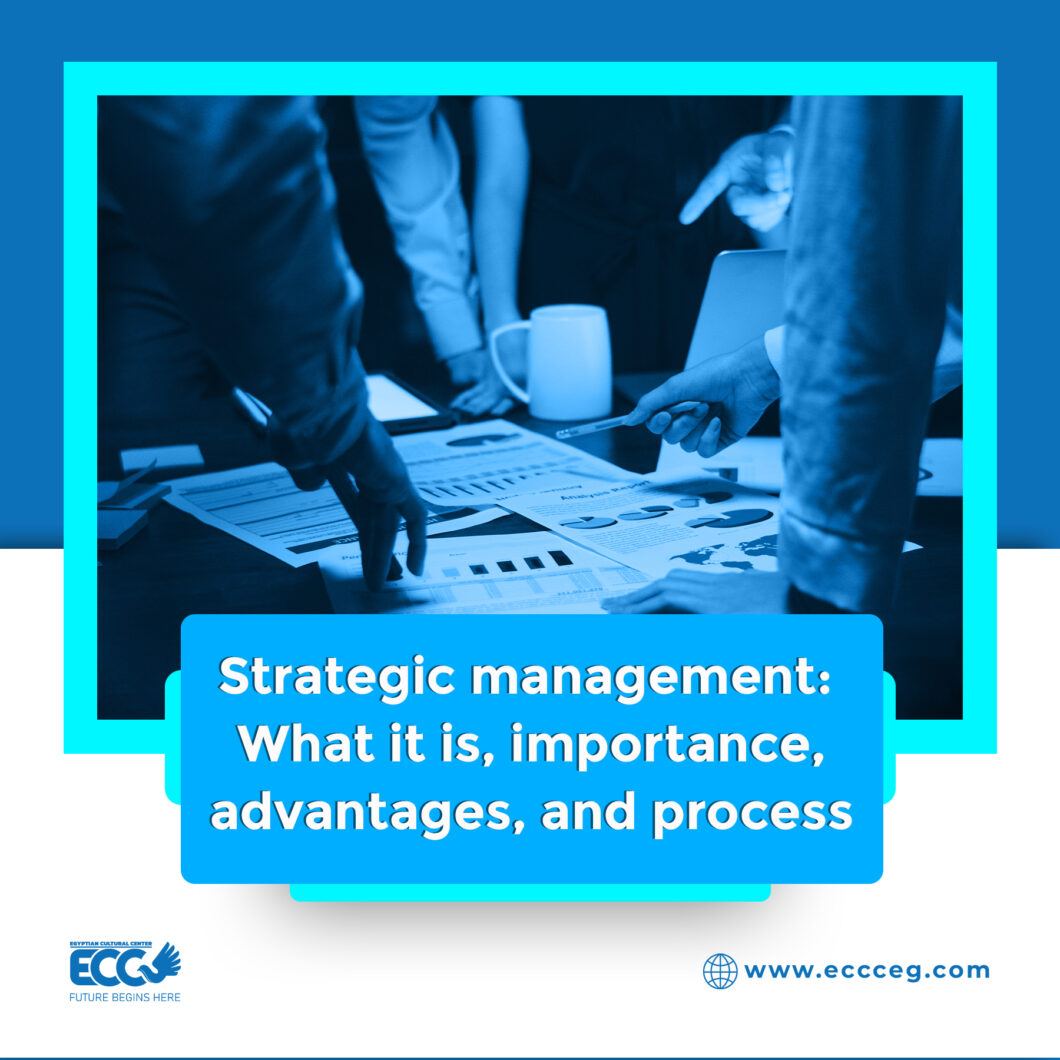The process of strategic management is more than a set of rules to follow, it is a philosophical approach to business, Senior management must think strategically first, and then apply that thinking to a process.
The process is best implemented when everyone within the business understands the strategy and there is correct strategic planning.
What is strategic management?
Strategic management is all the decisions made by the company’s management, which have a medium and long-term impact and are mainly aimed at defining the company’s strategy and ensuring its development and sustainability.
Strategic management thus allows the efforts of different workers to be coordinated around a project. The main actions of strategic management are planning and organization, defining the hiring and retention policy for teams, and deploying and monitoring the strategic plan.
What is it for and what is the importance of strategic management?
Strategic management serves to explore, identify, and prioritize opportunities in a continuous process. It offers a broad vision to managers to understand the market, the company’s position within it, and how to adjust the organizational plan to maintain financial balance.
The importance of a strategic plan is that it allows you to be objective in the cost-benefit analysis and discover if the company is profitable or, failing that, how to make it profitable. At the same time, it analyzes the sector in order to make decisions that keep the company in the market.
Read More: 11 Cheapest MBA in Europe
Advantages of strategic management

- Drive proactivity in the company: analyze competitors and take action to compete in the market, instead of waiting and reacting;
- Guides the company in a clear direction: defines realistic objectives aligned with the company’s vision;
- Achieve the survival of the company through market changes: evaluate opportunities and threats and recognize the strengths and weaknesses of the company to create strategies;
- Organizes and ensures correct use of resources: helps maintain good liquidity supervision and coordinates cash flow with long-term objectives. Identify the points where you must invest new resources to face the competition
- Improves internal communication: encourages good communication at all stages. Thus, each team is aware of the situation and can contribute its part without encountering obstacles or delays;
- Optimizes revenue generation: allows essential changes to be introduced in operational processes. In fact, analyzing competitors can be a source of inspiration and develop more profitable ideas to overcome them.
- Promotes understanding and commitment: with the intervention of managers and employees in strategic decision-making, a better understanding is developed of the direction being taken and optimizes engagement between teams.
Read More: Best Online DBA Programs 2024
What is the strategic management process?

Although it may vary, there are five stages of the strategic management process that are usually common to every company:
- Initial analysis.
- Assessment of the situation.
- Creation of the strategy.
- Strategy implementation.
- Monitoring of strategic management.
- Next, look at each of the stages and discover how to implement strategic management.
- Initial evaluation
In the initial stage of strategic management, the vision and mission of the company are identified to mark the path. You must know where you want to go with your company to chart the path to follow.
Inform your team about:
- Product
- Clients and target audience
- Market situation
- Values
- Public image
- Employees, etc
Thus, the vision and mission of the company will be the guide for decision-making. Keep in mind that at times your teams may lose focus and this point will be the lighthouse to get back on track.
- Analysis of the situation
At this stage, external and internal factors are analyzed to decide the future of the company. This part of the strategic management process is important to take advantage of opportunities and strengths and minimize threats and weaknesses.
For example, forecasts, projections and are based on the information resulting from this analysis and provide an overview of the situation. Sales plans
There are several methods to analyze the internal and external situation of a company. One of the most effective is the SWOT analysis. See how to do the SWOT analysis and plan strategies that cover all business points.
- Creation of the strategy
In this stage, the information from the previous steps is taken and the course of action is decided to meet the objectives and achieve the goals.
Remember to include short, medium and long-term objectives and what actions are appropriate for each one. The strategies cover each area of the company:
- sales strategies
- strategies in customer service customer service
- marketing strategies, etc
- Implementation of strategic management
Once strategic management is planned, all that remains is to put it into action. Assign roles and responsibilities to each team and explain how each one integrates with the others with the objective of achieving the goal.
Going from saying to the fact is not so simple. Allocate resources and dedicate time and effort to the implementation of strategic management if you want to see its fruits. In this step you can apply technology with artificial intelligence that automates the workflow and optimize strategy implementation.
- Monitoring of strategic management
The last stage of the strategic management process is monitoring. Record actions, results, and circumstances to identify how successful strategies were.
An important point is the use of communication channels internal to your teams and the points of contacts with your clients. Integrate the information your entire company receives and uses and keep your agents up to date with what’s happening. Thus, you better visualize the results obtained and evaluate the necessary improvements.
This is one of the best-known processes of strategic management. However, the types of strategic management can change. Now that you understand what strategic management is for, its importance, and the steps to do it, look at three inspiring examples to follow.
Read More: Mba In Saudi Arabia
Conclusion
Strategic management is important for organizations. Strategy is the primary activity of all leaders who seek management methods and tools to create competitive advantages and outperform the competition.
The challenge in this case is to create strategies that differentiate the company and fully satisfy the expectations and needs of clients, investors, and partners.
Next, the most difficult step is to ensure that the strategy extends throughout the organization and points everyone in the same direction, maximizing efforts toward the company’s objectives.
When strategic management fulfills its purpose, everyone walks in the same direction and becomes part of the corporate culture, seeing the same horizon pointed out by the leaders. This requires hard work, concentration, and analytical skills, as well as a deep understanding of management tools, scenario analysis, and tactical application.
To begin your journey in studying an MBA with the Egyptian Cultural Center, register now for a free consultation with one of our educational consultants through the following link: https://eccceg.com/


